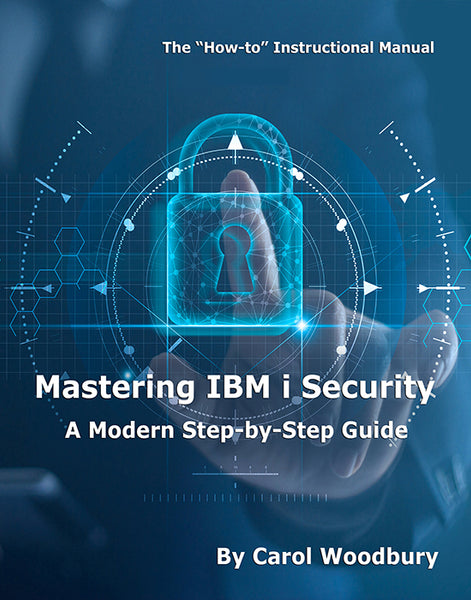When working with our clients, one of the topics that often arises is the use of QSECOFR. The question usually posed to me is "When and by whom is its use appropriate?" Good question! Let's examine some of the considerations.
First, you should sign on as QSECOFR only when the process requires it, such as when you're upgrading the operating system or you're in disaster recovery mode. You shouldn't have to sign on to install third-party applications unless the vendor has irresponsibly hard-coded its installation routine to check that QSECOFR is running the process. Then (obviously) you have no choice but to sign on as QSECOFR to perform the procedure.
Why limit the use of QSECOFR? Because it is rare that the QSECOFR password is known by only one person. When more than one person knows the password, accountability is lost. In other words, while all of the i5/OS audit entries log the fact that QSECOFR performed a task, how do you know who really performed the task?
But I can hear the protests now. "There are times," you say, "when the power of QSECOFR is required to perform a task." Very true. Some situations require *ALLOBJ and/or *SECADM authority. In fact, this is usually the case for security administrator tasks. So instead of allowing multiple users to sign on as QSECOFR, what do you do? You can either give users the necessary special authorities in their own profiles or you can make users a member of the QSECOFR profile. (Giving users special authorities in their own profiles is a slightly more secure implementation, but making them a member of QSECOFR is usually slightly more convenient.)
If multiple users in your organization have knowledge of the QSECOFR password, I strongly encourage you to modify your practices and create an individual profile for each person requiring the power of the QSECOFR profile.
Policy Minder Tip
Whether you make your powerful users members of QSECOFR or assign them *ALLOBJ directly, consider using a Policy Minder *USRPRF (user profile) template to keep track of all of the users with that power.
From the Main menu, take option 1=Work with Policies. Take option 5 on the *USRPRF category. Press F6=Create to create a new user profile template. On this first screen, you define which users to include in the template. You can include users in four ways: their user profile name (or a generic name), the user class they belong to, all of the members of a particular group profile, or all users with a particular special authority. (If you don't remember the various ways to include profiles, press F4=List and select from the list.)
To keep track of the users who have been assigned *ALLOBJ, specify *ALLOBJ in the Name field and *SPCAUT in the Type field. Scroll down. At the top of the next page, you will want to take advantage of the new Policy Minder 1.2 feature, "New profile allowed," and specify *NO. Keep scrolling down until you come back to the Work with Policies – User Profiles display. Now, run a compliance check on this policy (You can run a compliance check through the main menu Option 2=Work with Compliance or by running the CHECK command in the SKYVIEWPMP library.) This compliance check establishes a baseline of the profiles that currently are assigned *ALLOBJ. The next time you run a compliance check against this template, if any additional users are found to have *ALLOBJ, they will be flagged as "out of compliance." This allows you to review the list and make sure all of the assignments are appropriate. If they are, you can "Accept new" to add the profile to the policy.
Keeping track of the users who are in the QSECOFR group (or any other group, for that matter) is the same process as described above. You simply specify the profiles to be included in the template slightly differently. In this case, you specify the name of the group profile (for example, QSECOFR) for the Name and specify *GRPPRF for the Type.
Carol Woodbury is president and co-founder of SkyView Partners Inc., a company specializing in security policy and compliance software and services. Carol is a system security expert, a noted author, and an award-winning presenter. Along with Pat Botz, Carol is the author of Experts' Guide to OS/400 and i5/OS Security.















 Business users want new applications now. Market and regulatory pressures require faster application updates and delivery into production. Your IBM i developers may be approaching retirement, and you see no sure way to fill their positions with experienced developers. In addition, you may be caught between maintaining your existing applications and the uncertainty of moving to something new.
Business users want new applications now. Market and regulatory pressures require faster application updates and delivery into production. Your IBM i developers may be approaching retirement, and you see no sure way to fill their positions with experienced developers. In addition, you may be caught between maintaining your existing applications and the uncertainty of moving to something new. IT managers hoping to find new IBM i talent are discovering that the pool of experienced RPG programmers and operators or administrators with intimate knowledge of the operating system and the applications that run on it is small. This begs the question: How will you manage the platform that supports such a big part of your business? This guide offers strategies and software suggestions to help you plan IT staffing and resources and smooth the transition after your AS/400 talent retires. Read on to learn:
IT managers hoping to find new IBM i talent are discovering that the pool of experienced RPG programmers and operators or administrators with intimate knowledge of the operating system and the applications that run on it is small. This begs the question: How will you manage the platform that supports such a big part of your business? This guide offers strategies and software suggestions to help you plan IT staffing and resources and smooth the transition after your AS/400 talent retires. Read on to learn:
LATEST COMMENTS
MC Press Online